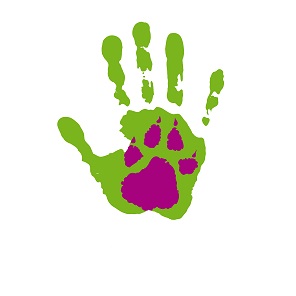When Socialization Goes Wrong
Socialization is one of the most misunderstood aspects of dog training. Almost everyone knows puppies need to be exposed to as many situations as possible so they will grow up to be confident, well behaved dogs.
Wrong
This is possibly one of the main reasons why the number of reactive dogs in urban centers is high.
It is also possibly one of the main reasons why small dogs are most likely to drop out of obedience classes within the first couple of days.
This believe is probably one of the main reasons why new pet owners end up with behavioral problems.
Socialization
True socialization is building a strong relationship, then introducing the dog to a safe environment, where the dog’s life is enriched. Remember that the threat doesn’t need a real threat. The dog may be reacting to the ‘possibility’ of a threat. Each ‘threat’ increases the dog’s sensitivity.
Step #1 – Relationship
The anxious dog is ‘reacting’ to a trigger. The reaction escalates on a sliding scale based on whether the dog feels safe, or the dog feels it might die. Dog owners have a dramatic impact on the level of anxiety their dog feels. If they build a strong relationship, If they work hard every day to engage with their dog, then they will have the dog’s trust. If the dog is sure you can handle the situation the fear drops.
When something has been introduced to the dog’s environment we want them to trust us.
Step #2 – Memories
Socialization is about creating memories. If a dog goes to the beach and has a great time, the dog will love the beach. If a dog goes to the beach and is constantly licking its lips, compresses slightly, the dog pulls away (even momentary) – and the cue is ignored, then the dog will be stressed. The dog will have a bad memory.
Step #3 – Reaction and Recovery
All dogs are stressed. How fast does the dog recover? A confident animal will recover in seconds.
You can condition your dog to recover faster. Here are a few tips:
- Comfort animals that are afraid. Dogs need you to be attentive to dogs. They crave touch. If you are calm, and assured when you are petting or comforting your dog then you will not make the problem worse. Keep your breathing slow and deep. Keep a gentle contact, don’t restrain them. Talk low and calm.
- It is difficult to be anxious when someone is playing with you. Especially with puppies.
- Food is the great distractor
- Movement! Dogs love to move. They love to chase. If you are moving then you are more interesting than the trigger.
Step #4 – Walk away
Don’t stress your dog. Relieve the suffering of your pet’s emotional distress. There is no reason to force a dog to suffer anxiety.
Adding distance between the trigger and the dog is one of the best ways to manage anxiety. This doesn’t always mean leaving. You may just go for a walk and come back to the situation in a few minutes. Let the dog have a bit of space. Let the dog decide when to come back.
Walk away may also be ‘in time.’ Your puppy may not be ready at this time. This week I took 2 dogs into a situation in a city. There are 3 months between both dogs, and the differences in their attitude was a case study in itself. The one reacted with fear. The other came to me to be reassured, but kept returning to the situation to investigate.
